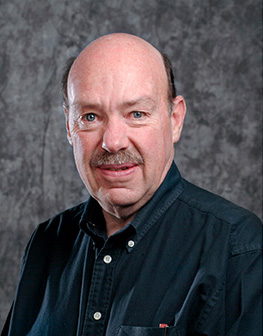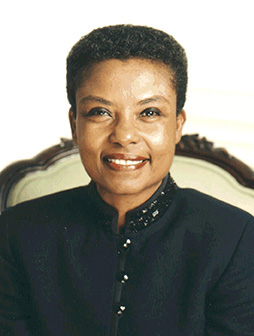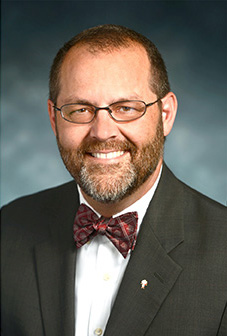The largest task of any Student Affairs professional is building bridges – building bridges between departments, between university divisions, and between students. These relational structures must be able to withstand significant change and turmoil, while supplying support for the student body.
At a panel discussion on October 4, Lyle Gohn, Johnetta Cross-Brazzell and Daniel Pugh, three former chief Student Affairs officers at the University of Arkansas, spoke about these bridges – the the issues they had a long the way, the strategies they used to build the Division, and the triumphs they encountered at the end.
Similar Issues, Different Decades
The most significant issue was inertia. The Division had grown stagnant, Gohn said. Diversity was stunted, the student body was not engaged, and the Division’s interaction with technology was behind.
“The Division had gone through some change, and I think we were somewhat in a standstill, not quite knowing where to go,” Gohn said. “I think that was the real challenge, trying to set the stage and to energize the staff and to get them to move in the direction that I felt the Division needed to move in in terms off a more aggressive and modern Student Affairs division.”
Gohn set out to energize the Division and the student body and build back the bridge of trust with the campus community.
“Students weren’t really involved in any of the protests or concerns or issues. In a sense, I would say, they felt like they had been left out – left out of the experience of the 70s – and they weren’t quite sure what to do with it or how to handle that. So that was a challenge, trying to energize them and get them involved on campus in meaningful ways.”
Diversity in many ways was a new issue on college campuses during that era, Gohn said.
“There were groups that just weren’t finding their niche and other groups that were preventing them from finding their niche,” Gohn said. “Beginning to deal with some of those issues I think was a challenge, but an opportunity.”
Symbiotic Strategies
“When I got here, and I met people who were working here and could see the potential for where this could go, that was very exciting to me,” Brazzell said. “I needed to be in a place that values students because they were the center of how I programed and looked at how I was going to be in the profession.”
Brazzell’s strategy was to reshape the Division and realign it’s mission with that of the University by creating a new campus culture – one that was student-centered.
“We had to be sure that the Division was in the middle of wherever the institution was going. We could not become peripheral to the mission and the goals of the institution. The major issues we focused on were retention and graduation. We needed to get retention up and bring graduation rates up,” Brazzell said, “but in order to do that, clearly, I had to work with my staff and redefine what we were about.”
This was not an easy task and one that took time and care, Brazzell said.
“We spent a year talking about the restructuring of the Division,” Brazzell said. “Going deep, going wide, bringing in outside people. We knew that one of the things we had to do for the University’s goal of retention and getting retention up was to create this University of Arkansas experience and the key to that was the First Year Experience program.”
The Division spent a year having conversations with faculty, students, and administrators about what the student experience at the University was all about, Brazzell said, and how integral that was to the first year of a student’s career on campus.
Brazzell not only got the Division’s mission and vision in line with the main institutional goals, she set about to change the culture of the student body.
She was concerned about student’s connection to the campus community, specifically with the amount of students that were going home over the weekend and spending fewer and fewer days on campus during the week.
“We had to change the culture of students leaving on Thursday, not returning until Monday and eventually not returning at all. So it came down to creating the kind of activities that would attract students and keep them here during the entire week, that hold students to each other and to the University. I believe it was more than just changing the culture of the campus, but there was a community culture that had to go with that.”
Brazzell focused on building key relationships which would strengthen the bonds of the Division with students and community partners for years to come.
“It takes time to bring about those kinds of changes and so putting together the goals, coming up with a vision, coming up with the themes, those were the things that we worked on as a Division but we also worked with our partners,” Brazzell said. “Everybody was our partner because we had to come together and to understand why we had to work together to make this experience the kind of experience we wanted it to be for students.”
Long-term Triumphs
For Danny Pugh, vice provost of student affairs from 2009-2015, he was determined to see Student Affairs triumph against the odds.
Pugh wanted to protect the Division, but also challenge the internal to get back to where it needed to be.
“Through that grew a new way of doing business,” Pugh said. “It grew a new way of doing work, it grew a new collaboration that was there. There had to be a renewed type of pride in what was happening as well. That was a day-to-day piece that most people didn’t see that I had to deal with on that framework. The Division pulled through that piece.”
Pugh wanted the Division to find it’s confidence again and not loose the energy they had built up unto that point.
“We had to relearn what Student Affairs was like here at the University of Arkansas, and how it interfaced with Academic Affairs, how it managed different processes, so as a collective group we sort of grew that piece, but it was a challenge and those that would say it wasn’t, wouldn’t be honest with you,” Pugh said. “We had to learn how to re-conceptualize ourselves … It’s got to about the service and the quality we can provide for our students.”
Service and quality is what Pugh made the Division’s presence about by meeting students where they are and restructuring the Division’s communication with students.
“Over the last 10 years while I was here, the evolution of students as digital natives in that environment has truly shifted some of the cultural aspects of what we see,” Pugh said. “How do we better utilize the technology that’s there because the student is native to that now and we’ve got to continue to change and morph with them in that framework. We’re still trending probably a generation behind. We’re all working off of 5s now, they’re all on 6s and 6pluses, but we’re trying to keep up with that, the evolution of that, and I think there in lies opportunity on what we can do.”
An Everlasting Touch on Student’s Lives
“Students that I don’t even know their names, they were touched by ROCK Camp. They were touched by the First Year Experience Program, they were touched by what happened to them in the Union, and they were touched by what happened in the residence hall,” Brazzell said. “Those halls can go away, those programs can dissolve, but nothing will change about that student’s experience at that moment in time. That’s the most important thing. And that’s what I take with me.”
At the end of the day, Brazzell said nothing else matters but the difference the Division could make in even one student’s life.
“Knowing that you made a difference in one kid’s life and that kid’s going to make a difference in another life,” Brazel said. “That is everlasting. Buildings will come, buildings will go, programs will change, but that touch and time will not.”

Lyle Gohn
Vice Chancellor of Student Affairs, 1982-1998

Johnetta Cross Brazzell
Vice Chancellor of Student Affairs, 1999-2009

Danny Pugh
Vice Provost of Student Affairs, 2009-2015
